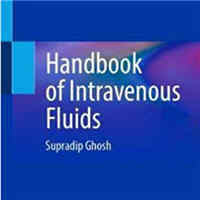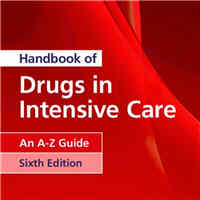Tag: heparin
TNF-α, PCT, IL-8, and HBP Prognostic Value Combined with APACHE II Score in Sepsis Patients
Serum TNF-α, PCT, IL-8, and HBP levels influenced sepsis patient prognosis, and their combined detection with APACHE II score provided a high predictive value for patient outcomes. Patients were divided into sepsis and... read more
Thromboprophylaxis Preferences in the ICU
Low-molecular-weight heparin (LMWH) was the preferred agent for thromboprophylaxis in critically ill patients. There was considerable variation in the application of LMWH for prophylaxis, reflected by the use of different... read more
Unfractionated Heparin May Improve Near-term Survival in ICU Patients with Sepsis Pneumonia
This study found that early administration of heparin, particularly in sufficient doses (Heparin Sodium 5000 units/mL, 1 mL per dose, three times daily (TID)) for more than 7 d, was associated with reduced near-term mortality... read more
Heparin-binding Protein Predicts Bacterial Infection in Severe Polytrauma Patients
In patients with severe polytrauma, heparin-binding protein may predict bacterial infection. Combining heparin-binding protein, PCT, and neutrophils may improve bacterial infection prediction. HBP provides a referenceable... read more
Anticoagulation in the ICU: Contact Pathway Inhibition Future
Bleeding and thrombotic complications are the main cause of morbidity and mortality in critically ill patients on the intensive care unit (ICU), receiving short-term percutaneous mechanical circulatory support (pMCS) by extracorporeal... read more
Heterogeneous Treatment Effects of Therapeutic-Dose Heparin in Patients Hospitalized for COVID-19
Randomized clinical trials (RCTs) of therapeutic-dose heparin in patients hospitalized with COVID-19 produced conflicting results, possibly due to heterogeneity of treatment effect (HTE) across individuals. Better understanding... read more
Heparin-based vs. Bivalirudin-based Anticoagulation in Pediatric ECMO
Bivalirudin may be a safe, cost-effective alternative to heparin in achieving anticoagulation in pediatric extracorporeal membrane oxygenation (ECMO) patients. Prospective multicenter studies and randomized control trials... read more
Ascending Aortic Thrombus After COVID-19 Infection
SARS-CoV-2 predisposes patients to both venous and arterial thromboembolism, including ascending aortic thrombus. The current guidelines for anticoagulation recommend three to six months of continuous anticoagulation... read more
Bivalirudin vs. Heparin for Maintenance Systemic Anticoagulation During ECMO
When compared with heparin-based systemic anticoagulation, bivalirudin demonstrated feasibility and safety as established by the absence of increases in identifiable adverse outcomes while manifesting substantial improvements... read more
Effectiveness of Therapeutic Heparin vs. Prophylactic Heparin on COVID-19 Patients
In moderately ill patients with covid-19 and increased D-dimer levels admitted to hospital wards, therapeutic heparin was not significantly associated with a reduction in the primary outcome but the odds of death at 28 days... read more
Venous Thromboembolism Prophylaxis in Critically Ill Adults
Among critically ill adults, compared to control, low molecular weight heparin (LMWH) reduces incidence of deep venous thrombosis (DVT) while UFH and mechanical compressive devices may reduce risk of DVT. LMWH is probably... read more
Therapeutic Anticoagulation vs. Usual Care in Noncritically Ill COVID-19 Patients
Among noncritically ill patients with COVID-19 infection, therapeutic anticoagulation with heparin improved the proportion of patients who survived without need for organ support. Therapeutic anticoagulation was associated... read more
Use of Bivalirudin for Anticoagulation in Pediatric ECMO
This study describes the use of bivalirudin in children on extracorporeal membrane oxygenation (ECMO). Pediatric patients receiving bivalirudin were compared to patients receiving heparin as the anticoagulant on ECMO. Data... read more
Tox and Hound – Metal Hydrides
We are left with four main scenarios in which arsine gas is produced and/or encountered: aqueous solutions of oxidized arsenic compounds in contact with metals metal arsenides in contact with water/moisture release... read more
Troponin Elevation in Non-cardiac Critical Illness
This article is about how to approach ischemia evaluation for the "non-cardiac" critically ill patient (someone admitted for a problem such as sepsis, stroke, or DKA). This is tough. We want to be thorough enough not to miss... read more
Early Hemostatic Management of Disseminated Intravascular Coagulopathy
Inflammation and coagulation pathobiology play a significant role in the development of multiorgan failure occurring with sepsis. Inflammation induced by an infection can lead to endothelial injury, which subsequently... read more
Accuracy of Heparin-Binding Protein in Diagnosing Sepsis
The diagnostic ability of heparin-binding protein is favorable, demonstrating both high sensitivity and specificity in predicting progression to sepsis in critically ill patients. Future studies could assess the incremental... read more
Massive PE with Intra-hospital Cardiac Arrest and Full Recovery of RV Function after vaECMO
The concept of vaECMO treatment alone might be a valuable alternative in selected patients with massive PE and cardiogenic shock, in whom thrombolytic therapy might not unload the RV fast enough. We present a case of a... read more
Heparin 2.0: A New Approach to the Infection Crisis
In April 2020, the US Food and Drug Administration granted emergency use authorization for certain medical devices to be used in patients with coronavirus disease 2019 (COVID-19). This included extracorporeal blood purification... read more
Unfractionated Heparin (UFH), LMWH, Fondaparinux, Argatroban, and Bivalirudin
Unfractionated heparin (UFH) binds to anti-thrombin III (AT-III), which enhances antithrombin's inhibition of several coagulation factors – especially factor Xa and factor IIa (thrombin). Low Molecular-Weight Heparin... read more
Refractory Septic Shock: Our Pragmatic Approach
Despite timely intervention, there exists a small subgroup of patients with septic shock who develop progressive multi-organ failure. Seemingly refractory to conventional therapy, they exhibit a very high mortality. Such... read more
Prevalence and outcome of heparin-induced thrombocytopenia diagnosed under veno-arterial extracorporeal membrane oxygenation
Prevalence of HIT among patients under VA‑ECMO is extremely low at 0.36% with an associated mortality rate of 33.3%, which appears to be in the same range as that observed in patients treated with VA‑ECMO without HIT.... read more









